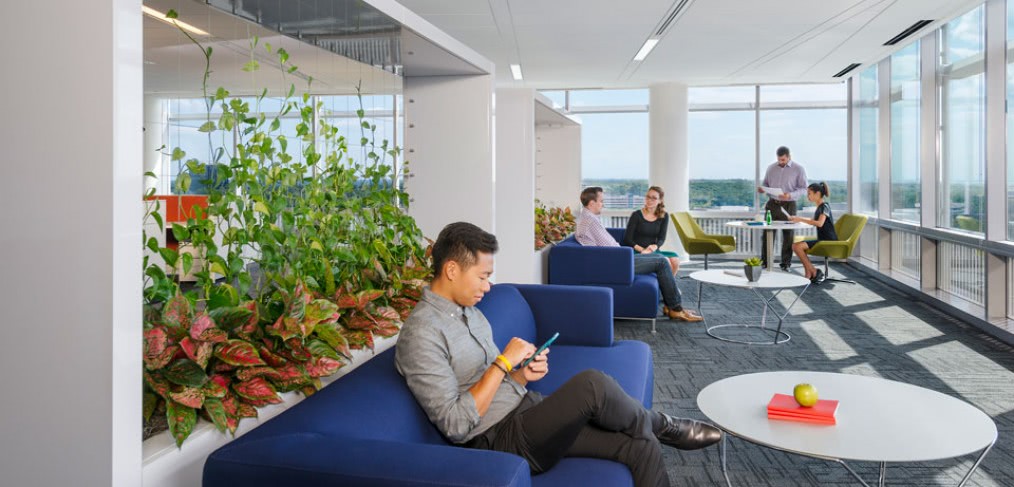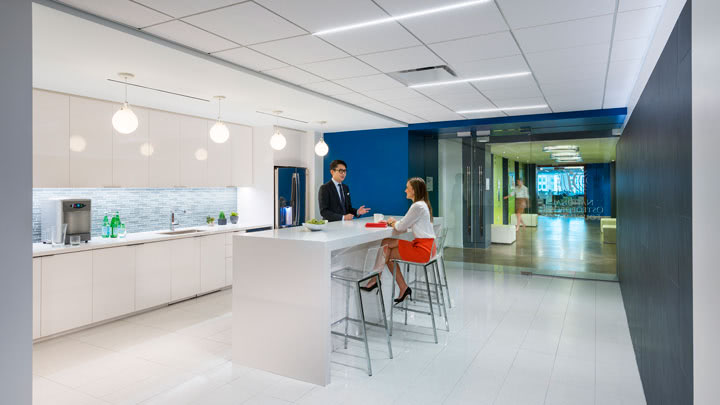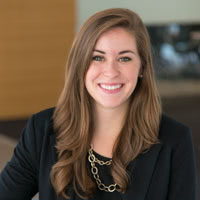
The Power of Choice
Last week, three CallisonRTKL workplace interior designers attended Work Design Magazine’s “Choice in the Workplace” panel discussion and walked away with fresh perspectives on designing for today’s employee.
Take a look at their key takeaways and a few real-life applications of these concepts.
 Callie Reid on Transparency:
Callie Reid on Transparency:
The idea of transparency in the workplace has been on the rise for years now. The important part to consider is its dual meaning. We know that office layouts have shifted from 95% enclosed spaces to designs that are as open as possible. The once-coveted corner office with solid walls has been replaced by smaller private offices with glass walls that let in light and allow for open sightlines. Long gone are the cubicle farms of the past; now employees work in open spaces with low-paneled workstations and plenty of areas for collaboration. Even pantry areas are seeing a transformation from lunch-only spots to spaces for collaboration, engagement and fun.
But transparency is more than just physical open space in the workplace – it also applies to the way employees interact with each other. Cross-collaboration and interaction between staff helps with retention and creates a sense of camaraderie within a company. Transparent offices help build transparent teams. Employees feel that they are included in decisions and are part of a team working toward a common goal. According to Dan Berger, CEO and Founder of Social Tables, the office is no longer simply a shell where they clock in nine-to-five to earn a biweekly paycheck. Companies that understand this shift in attitude and demonstrate the value of their employees, through the design of their workplaces and the structure of their teams, will gain a true competitive advantage.
 Rachel Brennan on Authenticity:
Rachel Brennan on Authenticity:
What’s the key to finding true authenticity? “Figure out what your vision is. Your space is your body language,” says Diana Horvat with Perkins + Will DC. In today’s world, we often turn to the latest trends, whether it’s technology, fashion or social media, to help dictate what we should or shouldn’t be doing. When it comes to design, more often than not we find that one solution doesn’t fit all. I agree with her logic and believe that in order to design effectively, it’s important to make intentional design choices about the mission and culture of the company while placing less importance on trends.
In my own work, I’ve seen examples where bucking the trend has proved to be the best solution for the client. The National Osteoporosis Foundation Headquarters, located in Crystal City, VA, doesn’t have many clients come into the office but entertains periodically to show their appreciation to sponsors and donors. They didn’t feel the need to have a traditional receptionist and instead installed a doorbell so that any employee could greet guests. With more available free space, we decided to place the pantry at the entry of the suite in order create a strong statement directly after stepping off of the elevator.
This approach obviously isn’t appropriate for every client but was important to NOF’s office culture. As a designer it’s important to design authentically, understanding the culture and needs of a client in order to create an office space that is authentic to a company and conducive to the way it functions.
 Ashley Gassan on Agility:
Ashley Gassan on Agility:
When talking about the people in today’s workplace, the conversation often focuses on the generations. From baby boomers to Gen Xers and millennials, it seems that these age groups are helping to define the way we design. We often hear that baby boomers are accustomed to a hierarchical structure that includes private offices, Gen Xers are comfortable with adapting to a variety of office types and millennials are all about the open plan. Is this the right approach? While it’s important to consider the different age groups, we can’t look at this issue from a strict generational viewpoint, but rather a people one.
With a shift to open, collaborative, technology-driven spaces, all generations have had to adapt. In fact, one panelist dispels the common generational claim, saying that they see the oldest generation and the youngest generation being the most compliant to workplace changes, while the in-between generation usually has the most pushback. GSA Workplace Strategist Dianne Juba stresses the importance of an agile workplace saying, “It’s all about the choices. The more choices, the more you benefit.” Regardless of generational differences, everyone has a work environment that works best for them. Some are easily focused and productive in an open environment, others suffer from distraction and loss of productivity. Creating choices to accommodate the different ways people work is of upmost importance to a successful design.
